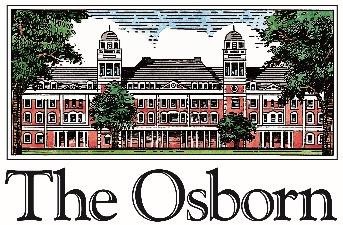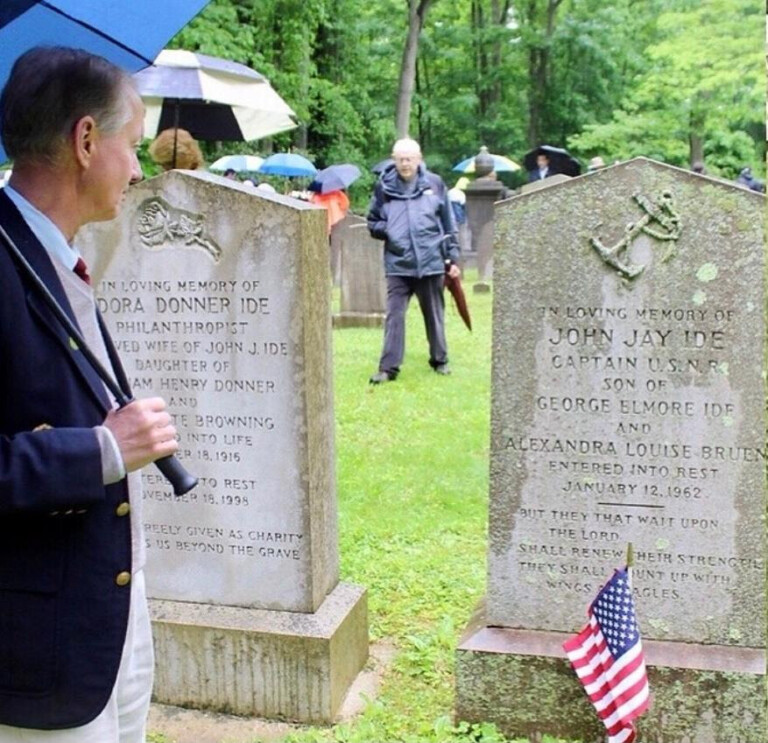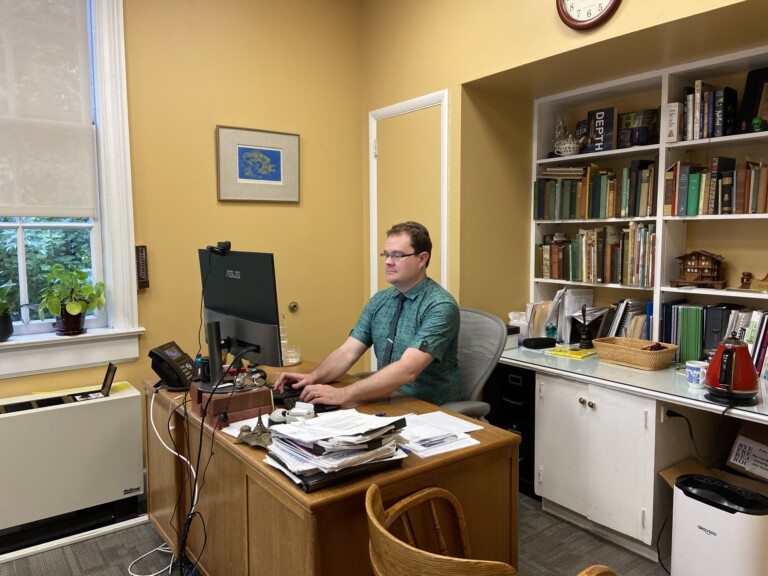The Osborn Home to Hold Community Sessions @ Future Building & Expansion Plans
The Osborn Home will be holding virtual community information sessions in September to explain the the zoning text amendment application it has before the Rye City Council. The zoning change would allow The Osborn to plan for future building and expansion in order to remain competitive in the senior living industry.
The Osborn’s CEO Matt Anderson sent a letter about the sessions and a details Q&A explaining the facilities history, its current connection and investment in Rye and its future plans to local residents. These appear in full below.
###
August 10, 2020
Dear Neighbors:
The past several months have been an unprecedented time for our country, and we hope that your family has remained safe and well. During this time, The Osborn has been working hard to protect and serve our residents and staff. At the same time, we continue to plan for The Osborn’s future ability to meet the changing needs of our residents. As part of this plan, we are requesting a zoning text amendment from the City of Rye.
Our last building project was completed nearly 25 years ago, and since then the senior living market has changed significantly. Our existing zoning limits our ability to add new buildings and amenities, which puts The Osborn in a difficult position to adapt to the current marketplace. The requested zoning text amendment would allow us the flexibility to construct new buildings to replace or modernize facilities on our campus, while maintaining its landscaped character and protecting the interests of the surrounding community.
The zoning text amendment is part of our efforts to ensure The Osborn’s future success and continued support for the City of Rye and its residents through our tax payments and community programs. We began our application for the zoning text amendment in 2018, and the application is now pending before the Rye City Council.
In the coming weeks, we will be hosting virtual conversations with our neighbors to discuss any questions you may have about the zoning text amendment request. We have scheduled the following dates and times for these virtual conversations:
• Thursday, September 10th at 12:30 pm
• Saturday, September 12th at 9:30 am
• Monday, September 14th at 5:30pm
For additional information about the application and the virtual conversations, please visit www.theosborn.org/zoning. You can also email us at zoning@theosborn.org. Enclosed is a summary of The Osborn’s history as well as some responses to preliminary questions relating to the zoning text amendment.
We welcome your involvement and look forward to talking with you soon. Sincerely,
Matthew G. Anderson
President and CEO
Zoning Questions and Answers
For more than a century, The Osborn has been providing a gracious home, exceptional care, and an engaged lifestyle for seniors on its iconic campus in Rye. Its longevity can be traced to an ability to recognize changes and trends in senior services. Over the years, The Osborn has adapted to meet the ever-evolving expectations of residents and the standards of the market. Today, as The Osborn approaches its 115th anniversary, its leadership team is continuing the tradition of providing excellent services to seniors by developing strategic plans to assure that this unique Rye treasure continues to thrive in the rapidly changing senior-living landscape.
Why the need for change?
The most recent major addition to The Osborn was 25 years ago. Since then, the senior living landscape has changed substantially. Much of the change has been driven by older Americans’ evolving expectations of retirement and of senior housing. This market for senior living communities has been transformed since The Osborn’s last major addition. There is now a wide range of new senior living options available in our region that offer larger living spaces and more amenities than exist at The Osborn. Recognizing these realities has led to an in-depth assessment of ways to remain competitive and provide appropriate and appealing options for living to current and future residents.
Who does The Osborn serve?
Many of The Osborn’s residents formerly lived in Rye, or their families live in Rye and they moved to The Osborn to be close to them. Many others have come from the surrounding communities in Westchester and southern Fairfield counties. More than three quarters of the outpatients who receive physical, occupational or speech therapy, or other care at The Osborn are Rye residents.
The Osborn also serves many of Rye’s adults and school children through community programs held on the campus. One of its longstanding and celebrated community events is the annual Jack Miller Easter Egg Hunt. The Osborn partners with other Rye organizations for ongoing community programs, such as The Rye Nature Center for an Arbor Day celebration, The Rye Youth Council, The Rye Walking Club and the various programs through the Rye YMCA.
In its historic Auditorium, The Osborn hosts numerous WellSpring events open to the community, including musical and dance performances, book discussions by well-known authors, and academic lectures on topics as diverse as health, climate change, and culinary arts. These events occur approximately every other month and are well attended by community members (non-Osborn residents).
In addition, The Osborn supports dozens of organizations within Rye and throughout Westchester County, either with financial assistance or collaboration. The Osborn’s senior managers participate as leaders in many of these community organizations, for example, the Rye Free Reading Room, the Rye City Lions Club, the Rye Rotary, the Rye Senior Advisory Council, SPRYE, the Alzheimer’s Association (Hudson Valley Chapter), the Human Development Services of Westchester, and Hospice of Westchester.
What is the Osborn requesting from the City?
With its first building completed in 1908, The Osborn predates even the earliest versions of the Rye Zoning Ordinance. Over the years, The Osborn and the City of Rye have worked together on issues of zoning as they relate to The Osborn’s campus. The last major change to The Osborn’s campus, the “Pathway 2000” plan, was approved by the City in 1993, together with a Declaration of Covenants and Restrictions modifying applicable zoning regulations for The Osborn. As industry standards and the needs of The Osborn’s residents have changed, the 27-year old zoning standards have become outmoded, making it difficult for The Osborn to plan for its future in the modern senior housing market. The Osborn is now seeking an update to the decades’ old zoning to better fit its senior housing use.
The Osborn’s proposal calls for the establishment of land use and dimensional requirements for “Senior Living Facilities” within the R-2 Zoning District. These standards, developed after significant discussion with the Rye Planning Commission, provide The Osborn with some greater flexibility in planning for its future, while also imposing additional restrictions on the campus to ensure The Osborn takes into consideration the surrounding community.
The Osborn first petitioned the Rye City Council to adopt the proposed zoning amendment in November 2018, and was referred to the Planning Commission for its review and recommendation. Over the course of several meetings with the Planning Commission throughout 2019, The Osborn revised and refined its zoning amendment request to address planning issues identified by the Commission. The Osborn’s revamped petition was submitted back to the City Council in March 2020 with a positive recommendation from the Planning Commission.
If adopted by the City Council, these new requirements would create a comprehensive zoning framework within which future Osborn site plan applications could be considered by the Planning Commission. All the proposed provisions of the Senior Living Facilities use are described in Tab II and Tab V, Section 1.C, of the Zoning Petition.
When will an Osborn site plan be made available?
If the proposed Senior Living amendment is adopted, The Osborn will begin detailed planning for the integration of new facilities into its existing campus. The design and timing of such changes will take into account the interests of current and future residents, other in- and outpatients served, and the surrounding Rye community. It is anticipated that such planning will take a minimum of six to twelve months. A Site Plan approval application would subsequently be prepared by The Osborn and submitted to the Rye Planning Commission, which would conduct public hearings as part of its review. At that time the Commission and the public would be able to review and weigh in on specific plans and possible impacts
Will the zoning amendment have an impact on the surrounding community?
The zoning amendment itself will not result in any immediate change to The Osborn’s campus. Instead, the requested amendment will allow The Osborn to develop a Site Plan for its campus, which will then require additional City review and public hearings on the specific Site Plan proposed.
In drafting the proposed zoning language, The Osborn and the Planning Commission both have given great thought to balancing the needs of Osborn residents against any impacts on the neighborhood. As recommended by the Rye Planning Commission, the proposed zoning text includes numerous restrictions to ensure future plans are in keeping with the current campus and do not greatly impact nearby residential properties. These protections include required landscaping and screening, increased setbacks from Osborn Road beyond what is currently permitted, an open space requirement to ensure The Osborn maintains its green campus, and greater restrictions on building height than what is currently permitted.
These protections, together with continued input from the City and the public on future Site Plans, are intended to ensure any prospective development is well-planned and that potential impacts are properly mitigated. It is The Osborn’s belief that these restrictions provide a significant balance to its need to adapt its campus to modern senior living standards.
What does The Osborn contribute to the community?
The Osborn pays $2.3 million in annual property taxes, making it Rye’s second-largest taxpayer ($1.3 million goes to the Rye City School District). As part of its charitable mission, The Osborn provides more than $3 million annually in free care to seniors who have outlived their resources. Community groups collectively receive about $50,000 annually in financial support from The Osborn. These organizations include the Rye Chamber of Commerce, Rye YMCA, Rye Nature Center, Rye Little League, the Rye Free Reading Room and other local not-for-profits. On-campus community events include the WellSpring speaker series, plays, dance troupes, concerts, holiday events, and more. Some 2,000 neighbors a year typically attend public events at The Osborn.
In addition to the numerous programs offered to the Rye public and the substantial fiscal benefits to the City, The Osborn has made significant donations to Rye. The Osborn donated land along the Boston Post Road to the Osborn School for improved vehicular access. The Osborn also made contributions for the development of new fields at Disbrow Park and financed the resignalization of all traffic lights, crosswalks, and crossing signage to the Boston Post Road, Osborn Road, and Oakland Beach Avenue intersection in an effort to improve traffic flow for the surrounding neighborhood.
The Osborn has always endeavored to be a good neighbor and citizen of Rye, which has long been reflected in The Osborn’s history. History has also shown that to maintain its fiscal health and to remain a member of the Rye community, The Osborn must have the ability to compete in a modern senior living marketplace. The requested amendment to the Zoning Ordinance is intended to establish a framework from which The Osborn can plan for its future, so that The Osborn can continue to be a successful Rye institution.
What is The Osborn’s history?
1840-1892: Founder Miriam Osborn was a young widow who envisioned creating a residence for other
widows where they could live out their golden years without worry. 1892: The Osborn formed by NYS Legislature to care for widows.
1908: The Osborn opened its doors as The Miriam Osborn Memorial Home Association.
1980s: Due to changing standards of care and a failure to adapt to a quickly evolving industry, The Osborn had become nearly obsolete and found itself in a financially precarious situation. In order to return The Osborn to fiscal health, The Osborn Board transformed The Osborn into a continuum of care retirement community.
1994: The $120 million expansion and transformation “Pathway 2000” plan began, and The Osborn accepted its first male residents.
1998: Osborn Home Care began providing services to seniors in their homes in Westchester County.
2016: Osborn Home Care expanded its services into Fairfield County.
2019: The Osborn received arboretum accreditation.
What are the major elements of The Osborn campus?
The Osborn’s services include independent living, assisted living, memory care, skilled nursing, long term and short-term rehabilitation, outpatient care, and off-campus home care. The 55.8-acre campus is home to 435 residents, and more than 475 patients annually receive treatment at The Pavilion skilled nursing facility. The Osborn is Rye’s second-largest employer with a staff of about 900; about 400 work on the campus. Major features of the campus, and the dates of their construction, include:
• The Osborn Building: Assisted Living/Independent Living Rentals, Dining Rooms, Administrative offices (1908)
• The Strathcona Building: Assisted Living/Independent Living Rentals, The H.O.P.E. Center for Memory
Care, WellSpring Café, Administrative Offices (1928)
• The Sterling Building: Assisted Living/Independent Living Rentals, Administrative offices, Auditorium/ Theatre (1934)
• Garden Homes: 40 Independent Living residences (1996-2001)
• The 2000 Building: 54 Independent Living residences (1995)
• The 3000 Building: 50 Independent Living residences (1998)
• The 4000 Building: 44 Independent Living Units (2000)
• The Pavilion skilled nursing facility: 84 long-term care and short-term rehabilitation beds (1998)
• The Natatorium
• The Fitness Center
• Three libraries that are branches of the Westchester County Library System
• Walking paths, perennial gardens and a certified arboretum
###







